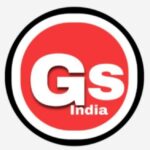कृपया आप सभी से निवेदन है कि आप पहले इन प्रश्नों को सॉल्व करेंगे फिर इसके बाद इन प्रश्नों के सही उत्तर देखने के लिए अंत में नीचे दिए गए उत्तर कुंजी (आंसर-की) में जाएंगे।।
Q1. थैलेसीमिया के लिए पसंदीदा दवा कौन सी है?
What is drug of choice for Thalassemia?
A. Dilantin
B. Vincristine
C. Deferoxsmine
D. Vinblastine
Q2. हाइपोवोलेमिक शॉक से पीड़ित ग्राहक को आप किस स्थिति में रखेंगे?
To which position will you change a client with hypovolemic shock?
A. Supine position
B. Left lateral position
C. Right lateral position
D. Trendelenburg position
Q3. यूरिक एसिड का संश्लेषण मुख्यतः कहाँ होता है?
Synthesis of uric acid mainly take place in:
A. Bone marrow
B. Kidney
C. Muscle
D. Liver
Q4. गुर्दा स्थित है:
Kidney is situated:
A. In dorsal cavity
B. In pelvic cavity
C. In abdominal cavity
D. In thoracic cavity
Q5. निम्नलिखित में से सभी लंबी हड्डियाँ हैं; सिवाय:
All of the following are long bones; except:
A. Tibia
B. Humerus
C. Scapula
D. Femur
Q6. रक्त के ऑन्कोटिक दबाव को बनाए रखने वाला प्लाज्मा प्रोटीन है:
The plasma protein that maintain oncotic pressure of blood is:
A. Prothrombin
B. Albumin
C. Fibrinogen
D. Globulin
Q7. इंसुलिन थेरेपी पर मरीज़ की सबसे आम जटिलता है:
The most common complication of patient on insulin therapy is:
A. Hyperkalemia
B. Hypernatremia
C. Hyperglycemia
D. Hypoglycemia
Q8. शीत आघात को यह भी कहा जाता है:
Cold Shock is also called as:
A. Cardiogenic shock
B. Hypovolemic shock
C. Vasogenic shock
D. Obstructive shock
Q9. दवाओं के प्रति एनाफाइलैक्सिस का उपचार निम्नलिखित तरीकों से किया जाता है:
Anaphylaxis to drugs is treated by:
A. Nebulization
B. Adrenaline injection
C. Oxygen administration
D. Intravenous fluids
Q10. अस्पताल की ड्रेसिंग का सबसे अच्छा निपटान इस प्रकार किया जाता है:
Hospital dressing are best disposed by:
A. Burying
B. Boiling
C. Dumping
D. Burning
Q11. ओआरएस में मुख्य रूप से निम्नलिखित शामिल हैं:
ORS mainly contains:
A. Sodium and Glucose
B. Sodium and Fractose
C. Calcium and Fractose
D. Calcium and Glucose
Q12. प्रेरणा की मुख्य मांसपेशी है:
The main muscle of inspiration is:
A. Rectus abdominus
B. Internal intercostal
C. Scalenus anterior
D. Diaphragm
Q13. वह हार्मोन जो ग्रहणी में पित्त के स्राव को उत्तेजित करता है:
The hormone that is stimulates release of bile into dudenum is:
A. Cholecystokinin
B. Secretin
C. Gastrin
D. Entrigastrone
Q14. जन्म के समय नवजात शिशु की स्थिति का मात्रात्मक मूल्यांकन निम्नलिखित द्वारा किया जाता है:
Quantitative assessment of neonate’s condition at birth is done by:
A. Recording temperature
B. Recording BP
C. Apgar score
D. Examination of JVP
Q15. भ्रूण का गुर्दा मूत्र का उत्पादन तब शुरू करता है जब:
The fetal kidney start producing urine at:
A. 15 weeks
B. 12 weeks
C. 8 weeks
D. 4 weeks
उपरोक्त प्रश्नों के उत्तर नीचे दिए गए हैं:
(Answer Keys)
Q1.Ans.••C. Deferoxsmine
Q2.Ans.••D. Trendelenburg position
Q3.Ans.D. Liver
Q4.Ans.••C. In abdominal cavity
Q5.Ans.••C. Scapula
Q6.Ans.••B. Albumin
Note:: ऑन्कोटिक दबाव, जिसे कोलाइड ऑस्मोटिक दबाव
के रूप में भी जाना जाता है, रक्त प्लाज्मा में प्रोटीन द्वारा
लगाया जाने वाला दबाव है । रक्त में प्रोटीन, जैसे कि
एल्ब्यूमिन, एक ऑस्मोटिक दबाव बनाते हैं जो पानी को
केशिकाओं में वापस खींचता है ।
••मानव प्लाज्मा में प्रोटीन द्वारा लगाया गया ऑन्कोटिक
दबाव का सामान्य मान लगभग 26 से 28 mm Hg होता है।
Q7.Ans.••D. Hypoglycemia
Q8.Ans.••B. Hypovolemic shock
Q9.Ans.••B. Adrenaline injection
Q10.Ans.••D. Burning
Q11.Ans.••A. Sodium and Glucose
Q12.Ans.••D. Diaphragm
Q13.Ans.••A. Cholecystokinin
••Note:: Cholecystokinin is secreted by cells of the upper small intestine. Its secretion is stimulated by the introduction of hydrochloric acid, amino acids, or fatty acids into the stomach or duodenum. Cholecystokinin stimulates the gallbladder to contract and release stored bile into the intestine
Q14.Ans••C. Apgar score
Q15.Ans.•••B. 12 weeks
मैं आशा करती हूं कि आपको यह बहुविकल्पी प्रश्न सीरीज (MCQ) पसंद आई होगी।
धन्यवाद!!
Writer: Vandita Singh Lucknow
(By GS India Nursing Classes Lucknow)
